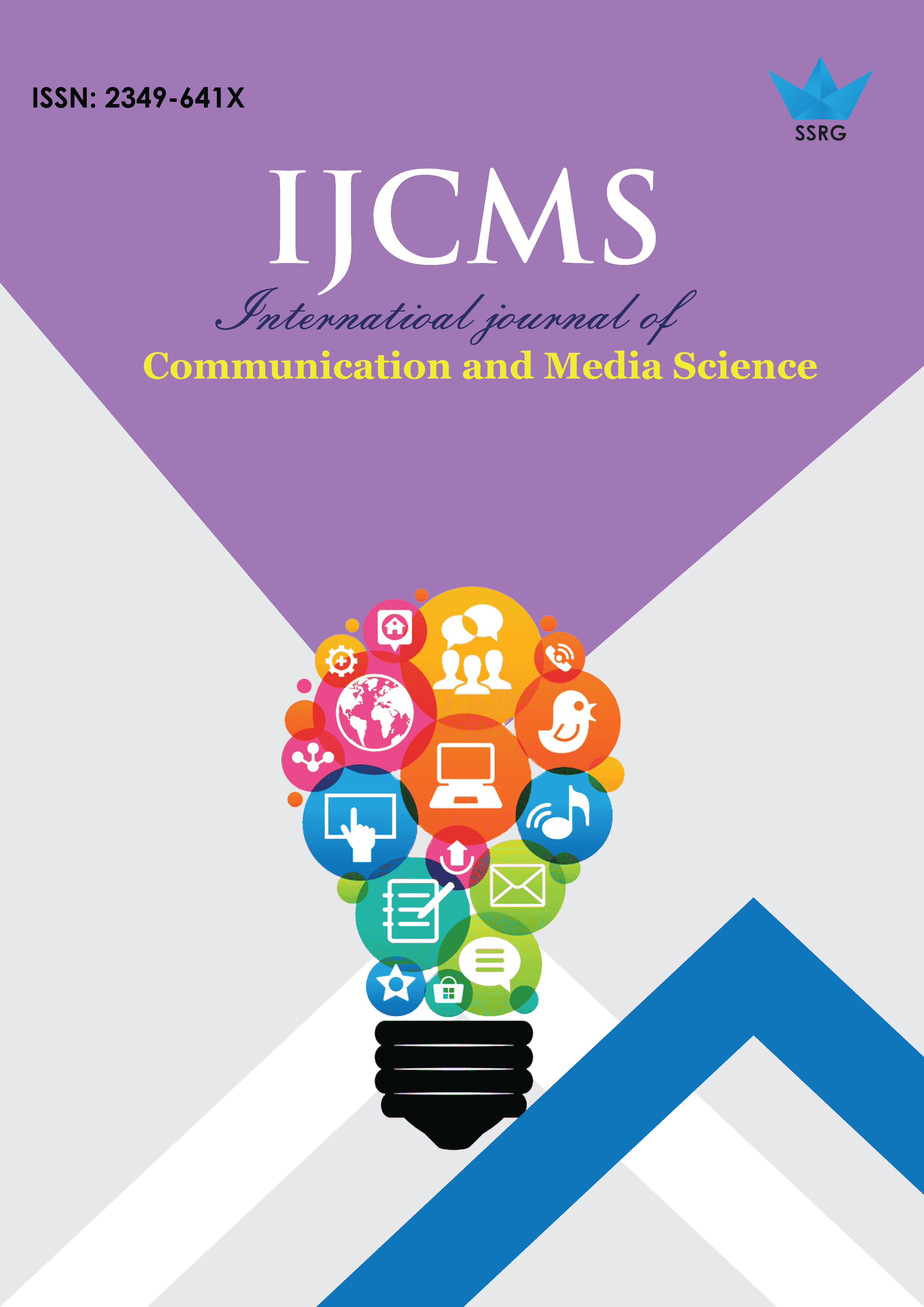The Use of Facebook by LVCT Health to Disseminate HIV-Related Information to Young People in Homa Bay Town

| International Journal of Communication and Media Science |
| © 2025 by SSRG - IJCMS Journal |
| Volume 12 Issue 2 |
| Year of Publication : 2025 |
| Authors : Denise Akun, Geoffrey Korir |
How to Cite?
Denise Akun, Geoffrey Korir, "The Use of Facebook by LVCT Health to Disseminate HIV-Related Information to Young People in Homa Bay Town," SSRG International Journal of Communication and Media Science, vol. 12, no. 2, pp. 34-46, 2025. Crossref, https://doi.org/10.14445/2349641X/IJCMS-V12I2P104
Abstract:
Homa Bay Town continues to bear a heavy burden of HIV and AIDS among its young residents. A recent survey indicates that Homa Bay County has an HIV prevalence rate of 19.1 percent, significantly higher than the national average of 4.5 percent. While most research focuses on community and health facility interventions, few studies have examined how organizations leverage Facebook to reduce the HIV burden. This paper, therefore, explores how LVCT Health uses its Facebook page to disseminate HIV-related information to young people in Homa Bay town. To achieve this objective, the study adopts a case study design within a qualitative research approach. Purposive sampling was used to identify participants, including 24 young residents of Homa Bay, 4 digital opinion leaders, and 4 staff members from the communications and HIV program teams at LVCT Health. Empirical data were collected through focus group discussions and in-depth interviews, and were analyzed thematically. The findings are presented in a narrative format. Based on these findings, the paper contributes to extant literature by demonstrating how organizations can leverage Facebook as a digital infrastructure to improve access to HIV information in high-prevalence regions.
Keywords:
Engagement, Facebook interventions, HIV services, Opinion leaders, Reach.
References:
[1] Tajudeen Temitayo Adebayo, “Information Seeking Behaviour and Risk Practices among People Living with HIV/AIDS in SouthWest, Nigeria,” Library Philosophy and Practice, 2012.
[Google Scholar] [Publisher Link]
[2] Gavin George et al., “Exposure to Comprehensive Sexuality Education in Schools in South Africa: The Implications on the Uptake of HIV Testing Services Among HIV Positive Adolescent Girls,” AIDS Care: Psychological and Socio-medical Aspects of AIDS/HIV, vol. 36, no. 1, pp. 54-59, 2024.
[CrossRef] [Google Scholar] [Publisher Link]
[3] Yu-Chao Huang, Yi-Pin Lin, and Gregory D. Saxton, “Give Me a Like: How HIV/AIDS Nonprofit Organizations Can Engage their Audience on Facebook,” AIDS Education and Prevention, vol. 28, no.6, 2016.
[CrossRef] [Google Scholar] [Publisher Link]
[4] J. Jones et al., “Attitudes Toward HIV Testing, Awareness of HIV Campaigns, and Using Social Networking Sites to Deliver HIV Testing Messages in the Age of Social Media: A Qualitative Study of Young Black Men,” Health Education Research, vol. 34, no. 1, pp. 15-26, 2019.
[CrossRef] [Google Scholar] [Publisher Link]
[5] Elihu Katz, Paul F. Lazarsfeld, and Elmo Roper, Personal Influence: The Part Played by People in the Flow of Mass Communications, 1st Ed., Routledge, 2006.
[CrossRef] [Google Scholar] [Publisher Link]
[6] Kenya National AIDS Control Council, Kenya AIDS Response Progress Report 2020, NACC, KNACC Technical Report, 2020. [Online]. Available: https://analytics.nsdcc.go.ke/estimates/Kenya-HIV-Estimate-Report-2020.pdf
[7] Ministry of Health (MoH), Kenya HIV Progress Report, 2023. [Online]. Available: https://analytics.nsdcc.go.ke/estimates/KENYA%20AIDS%20STRATEGIC%20FRAMEWORK%20II%202023-MTR%20Report.pdf
[8] S. Anne Moorhead et al., “A New Dimension of Health Care: Systematic Review of the Uses, Benefits, and Limitations of Social Media for Health Communication,” Journal of Medical Internet Research, vol. 15, no. 4, pp. 1-17, 2013.
[CrossRef] [Google Scholar] [Publisher Link]
[9] Kyle Hoedebecke et al., “Health Care and Social Media: What Patients Really Understand,” F1000Research, vol. 6, pp. 1-8, 2017.
[CrossRef] [Google Scholar] [Publisher Link]
[10] Ndati Ndeti, “The Impact of HIV/AIDS Communication Strategies for Adolescents: A Case Study of HIV/AIDS Education Programme in Kenya’s Secondary Schools,” Doctoral Dissertation, University of Nairobi, pp. 1-121, 2004.
[Google Scholar] [Publisher Link]
[11] Edwine Jeremiah Otieno, and Michael Tedd Okuku, “Social Cultural Factors Contributing to the Spread of HIV and AIDS in Homabay County,” Beyond Agency, Voice and Space in Africa's Development, pp. 135-146, 2017.
[Google Scholar]
[12] Lee Rainie, Aaron Smith, and Maeve Duggan, “Coming and Going on Facebook,” Pew Research Center, pp. 1-7, 2013.
[Google Scholar] [Publisher Link]
[13] Valentine Sing’oei et al., “HIV Prevalence and Awareness Among Adults Presenting for Enrolment Into a Study of People at Risk for HIV In Kisumu County, Western Kenya,” PLOS ONE, vol. 19, pp. 1-13, 2024.
[CrossRef] [Google Scholar] [Publisher Link]
[14] Gift Briton, How Digital Technology is Improving Access to Health Services for Kenyan Youths, The Science Africa, 2024. [Online]. Available: https://scienceafrica.co.ke/2024/05/14/how-digital-technology-is-improving-access-to-health-services-for-kenyan-youths/
[15] The Stats Kenya Website. [Online]. Available: https://statskenya.co.ke/at-stats-kenya/about/hiv-in-kenya-by-county-prevalence-new infections-deaths/109/

 10.14445/2349641X/IJCMS-V12I2P104
10.14445/2349641X/IJCMS-V12I2P104